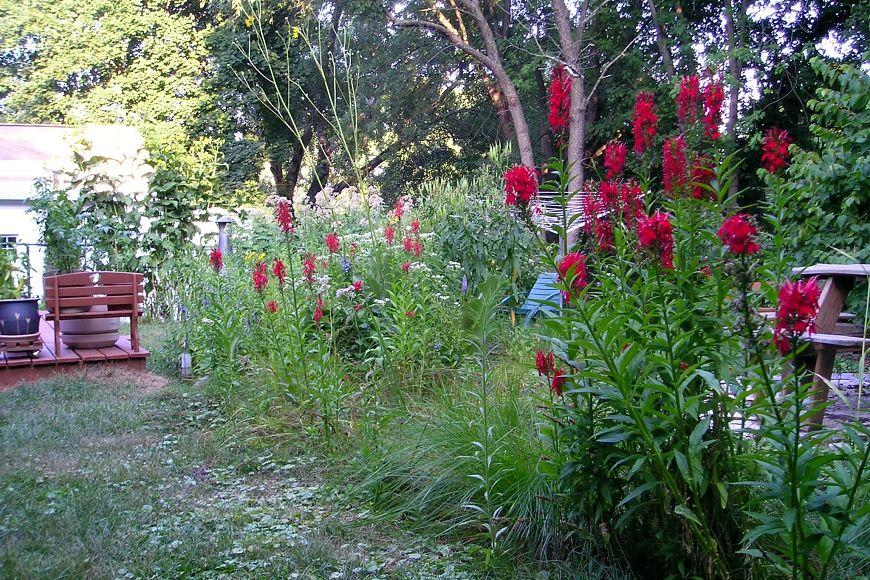Never mind the cold, think spring!
Plan now to add native plants
Andrea Zani
 ©AMY STAFFENWisconsin's native plants have evolved to suit the state's climate, making them low-maintenance and better at supporting native wildlife.
©AMY STAFFENWisconsin's native plants have evolved to suit the state's climate, making them low-maintenance and better at supporting native wildlife.There’s no time like the often dreary days of winter to entertain warm thoughts of next year’s garden. If you’re inclined to give this season the cold shoulder and plan now for spring, consider native plants.
“There are just so many different, interesting ways you can incorporate native plants into your home landscape,” DNR conservation biologist Amy Staffen said.
Here are several resources:
Wisconsin’s native plants are ideal for gardeners because they have evolved to suit the state’s climate, Staffen said. “So they’re low-maintenance and will survive better after becoming established.”
They’re also better at supporting native wildlife, because those species also have evolved in the state along with these native plants.
One of the first things to do when thinking of adding native plants, Staffen advised, is to study the area to be planted to determine “light regime and soil type.” There are native plants for a variety of light conditions and soils.
There also are plants for every season. Diversify plants to allow for different bloom times, Staffen said. That makes a more attractive garden all year and is better for wildlife.
WHY NOT NATIVES?
Native plants are versatile and can be melded to any garden preference, from lush overflowing lots to neat and orderly landscapes. Gardeners also can get down in the weeds, so to speak, with plant details, such as which specific pollinators are attracted to which native plants.
Staffen has any number of favorites, many in her own garden. Jacob’s ladder, for example, is a spring and early summer bloomer that tolerates many soil conditions. It provides both nectar and pollen and “even the leaves provide food for some moths.”
Prairie smoke, in the rose family, is one of the groundcover plants Staffen grows. “Groundcovers can help us capture a lot of space so that we don’t have to do a lot of weeding, and they prevent the soil from eroding,” she said.
Creating a rain garden with native plants also is a great way to support wildlife while reducing flooding, she added. “It serves as a great sponge” to soak up excess water from heavier rains.
Native planting projects can be large scale “out in the country,” Staffen said — prairie restorations, for example — and the DNR has resources to help in planning and site preparation. Or one can add just a few native stems to beautify any small garden space and help pollinators in the process.
“Whether you plant a huge diversity of plants … or if you just have two or three, you’re going to make a difference in promoting habitat for native pollinators and other wildlife,” she said.
“If you’re thinking of putting any perennial beds in at your home landscape, why not plant natives? Let’s all do our part to help promote habitat for our native wildlife.”
Andrea Zani is managing editor of Wisconsin Natural Resources magazine.
INFORMATION
The DNR’s native plants webpage has resources on where to buy native plants, landscaping recommendations and pollinator news, plus “Garden Tour” video links and downloadable copies of the plant handouts printed here. Go to Native Plants to Help Nature.

